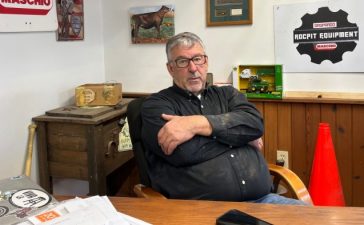October is National Substance Use Prevention Month, which makes it ideal to begin adapting prevention efforts to reach as many people as possible.
Amid the ongoing opioid epidemic, it has become critical to keep communities informed.
Fentanyl and other opioids are fueling the worst drug crisis in the history of the U.S., and it has become defined by fentanyl.
Local drug education and prevention campaigns in Minnesota and reliable information about opioids are essential in reducing overdose deaths and preventing people from becoming addicted to opioids.
Most people know the epidemic began with overprescribing pain medications like OxyContin, which were marketed as safe and effective. The epidemic went in waves, involving pain medication, a resurgence of heroin and illegally manufactured synthetic opioids.
Drug cartels capitalized on the growing heroin trade and became leaders in fentanyl products in 2019, while China remains the leading manufacturer of the ingredients needed to create fentanyl.
Unfortunately, the COVID-19 pandemic significantly worsened the problems. Border closures and supply chain disruptions forced drug users to turn to local suppliers and unknown drugs. The lockdowns and social isolation led to countless drug users using drugs alone with no access to early intervention or treatment.
Minnesota reported record drug overdose deaths in 2021, with the increasing prevalence of fentanyl thought to be the contributing factor. In 2021, there were over 1,200 overdose deaths, a 22% increase from 2020.
Preventative messaging can have a real impact and save many lives. Essential messages, like fentanyl can be hidden in drugs, which is a leading factor behind accidental overdose death.
Illegally manufactured fentanyl is commonly made into counterfeit pain medication and sold on social media platforms. Drug dealers use code words and emojis to advertise these products, often targeting young people. It’s easy to have these drugs delivered to your doorstep.
Fentanyl is also found in heroin, cocaine and methamphetamine. It is impossible to tell if a drug has been laced with fentanyl without using fentanyl test strips.
Moreover, mixing drugs increases overdose risk, especially if that drug may contain fentanyl. Mixing stimulants increases the risk of stroke and heart attack while mixing opioids with other depressants slows breathing and may cause brain damage.
Naloxone is a life-saving medication and can reverse opioid overdose. It is available in all 50 states, and Good Samaritan laws protect those overdosing and should be accessible to anyone.
Finally, people in treatment and those in recovery need support. Anytime someone shows compassion and offers support, it reduces the stigma attached to drug use and addiction. Substance use disorders are treatable, and recovery is possible. Treatment is available in person, online, or through telehealth.
By sharing campaigns and related resources with everyone, communities are taking an important step to stop drug overdose and save lives.
Jody Boulay currently works as community outreach coordinator for Addicted.org to help spread awareness of the dangers of drugs and alcohol.





